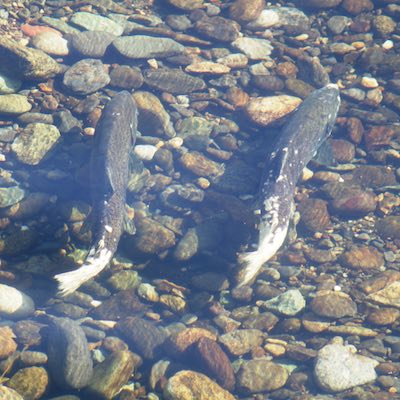Chinook Salmon

Quick Facts
Latin Name: Oncorhynchus kisutch
Status: Endangered and threatened
Population: Both the Asian and North American sides of the North Pacific Ocean
Diet: Plankton and insects in freshwater and small fish in the ocean
Weight: Average weight is 40 pounds (can grow up to 120 pounds)
Length: 3 feet
About the Chinook Salmon
Like other salmon species, Chinook salmon return to the rivers and streams of their birth to mate but spend most of their adult life in ocean habitats. They spend between 3 months and two years in freshwater habitats and 2-4 years in marine environments.
After hatching from their eggs, juvenile Chinook salmon have dark bands on their sides, also known as parr marks, that help camouflage them in stream environments. As the salmon mature and prepare to migrate downstream, their skin becomes dark on their backs and light on their underbellies to help them confuse ocean predators.
Chinook salmon are often called “king salmon” because they are the largest species of salmon.
For more information: NOAA Fisheries and U.S. Fish & Wildlife Service
Photography: Image #1 and #2 by Dan Cox, U.S. Fish & Wildlife Service.
How you can help this species
Help conserve America's forests.
Stay in the know. Get the latest news.
Conservation PROJECTS WITH
Chinook Salmon HABITATS
The Pacific Forest Trust is dedicated to preserving natural habitats and forest systems where animals can thrive. Explore some of our conservation projects and easements in and around the Chinook salmon habitat.
